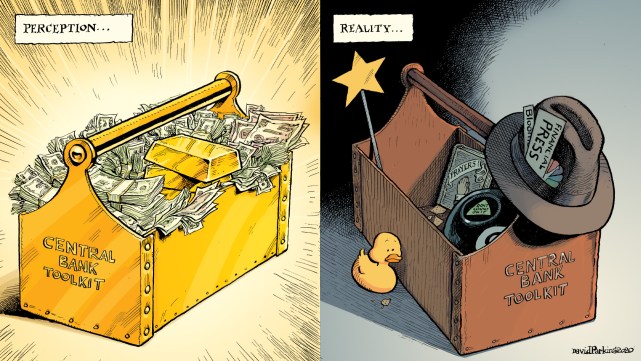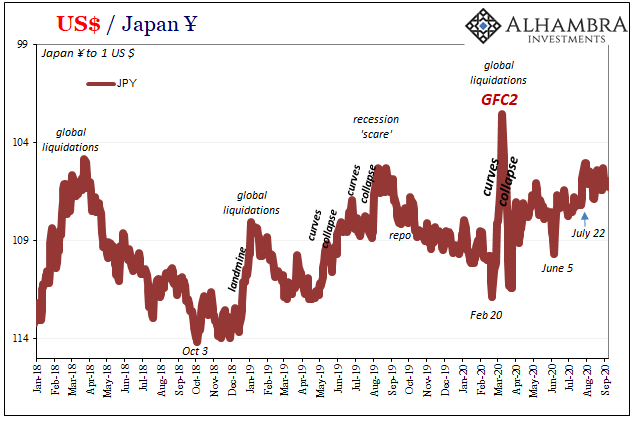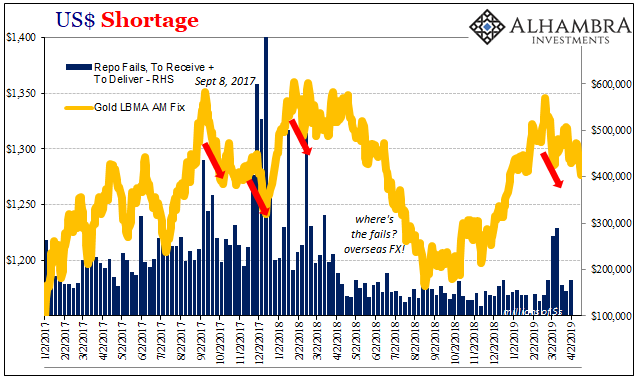Submitted by Mark Chandler, from marctomarkets.com
Last week the euro was the weakest of the major currencies and the recently beaten up sterling and yen were the strongest. A similar pattern was also evident in the dollar-bloc. The New Zealand dollar had been the strongest and last week had was the weakest, with the Canadian dollar faring somewhat better. The Australian dollar has been trending lower, but staged a potentially important reversal before the weekend.
The key issue facing market participants this week is whether the price action represents a correction to the recent trend or a reversal or the start of a new trend. After reviewing the technical condition of the market, we continue to conclude the price action is corrective in nature, but the price action, especially in the second half of the week, warns that the correction may be extended in the coming days.
Given the divergent price trends, it may be helpful to drill down and review the specific technical condition of few of the currency pairs.
Euro: We had anticipated the pullback toward $1.34, but the poor close before the weekend, which includes two successive closes below the 20-day moving average for the first time in three months, indicates additional near-term losses are likely. A break of $1.3350, which held on Friday, could spur a move toward $1.3220-$1.3270. Trend line support and retracement objectives are cluttered in that area. However, we recognize that a convincing break of $1.32 would open the door for another two cent slide. A move back above the $1.3400-50 would improve the technical tone and suggest the correction is over.
Yen: Comments by Japan’s Finance Minister toning down the bearish rhetoric ahead of the G20 meeting, suggesting that pace of the yen’s descent was too rapid, and the setback in the euro, fueling corrective pressures from the cross. After Aso’s comments, the dollar appears to have carved out a triangle pattern intersecting near JPY92.50 and JPY92.90. If this is a continuation pattern, a move toward JPY91.80-JPY92.00 would be targeted. On the other hand, a move above JPY93.00-20 would stabilize the tone and suggest a near-term consolidative tone.
Sterling: Sterling has been pounded this year. It is the second worst performer against the dollar after the Japanese yen. It made new lows at the start of the week, but these losses were not confirmed by the RSI, leaving a bullish divergence in its wake. This set the technical stage for the recovery in the second half of the week. The advance ahead of the weekend saw sterling flirt with its 20-day moving average for the first time in nearly a month. The MACDs are also trying to turn higher, but the $1.5850-$1.5900 offer formidable resistance. Against the euro, sterling staged its biggest advance in since late Oct 2011. The euro had peaked at the start of the month near GBP0.8720 and the GBP0.8400 area represents a 50% retracement of this year’s gain. A move toward there would be consistent with our expectation for additional, albeit modest, extension of what we see as corrective forces. However, a convincing break of GBP0.8400 could signal a deeper retracement toward GBP0.8325 initially.
Canadian dollar: An upside reversal of the US dollar was seen on Thursday and follow through buying was seen before the weekend. The greenback firmed to test a technical objective near CAD1.0040. If corrective forces continue to be felt in the coming days, the US dollar will likely test the last high near CAD1.01 and potential toward CAD1.0140. Owing perhaps to a disappoint Canadian jobs report before the weekend, the euro held above Thursday’s low near CAD1.3340. Initial resistance is pegged near CAD1.3450, but it may require a move through CAD1.3480 to signal the end of the brief though sharp correction.
Australian dollar: The Australian dollar, like sterling, posted strong gains ahead of the weekend. From a technical point of view, the Australian dollar looks to among the strongest of the currencies we reviewed. Against the dollar, it staged an impressive reversal on Friday: after falling to new lows for the move (3 1/2 month lows), it then rallied above the previous day’s high. To confirm the recovery, the Aussie needs to overcome nearby resistance in the $1.0360-80 area, which in turn would project toward $1.0460. The Aussie had fallen to its lowest level against the New Zealand dollar since H2 2010 early last week, but reversed at midweek. The key level to monitor on the upside is NZD1.24. A move above there would confirm a low of some import is in place and would suggest initial recovery gains toward NZD1.25. The Australian dollar’s recovery against the Canadian dollar is generating even more positive technical signals. Since Jan 24, the Aussie lost almost 3% against the Canadian dollar, but the key reversal before the weekend was impressive. Initially, we look for a move toward CAD1.0430-50 and then possibly CAD1.0550.
Dollar-Index: Although the Dollar-Index (DXY) failed to make a new high before the weekend, holding just below the high set on Thursday near 80.28, the settlement was near the high of the day and the technical tone remains constructive. The key area to watch is near 80.50. It corresponds to where the downtrend line drawn off the mid-Nov high near 81.50 and the Jan 4 high just below 80.90. It also corresponds to a retracement objective of the losses from that mid-Nov high.
Turning to our review of the speculative positioning in the futures market we share the following observations.
First, although implied volatility in the euro and yen rose during the CFTC’s reporting period, the position adjusting was minimal. Of the seven currencies we reviewed, there was no gross long or short position that changed by more than 10k contracts. Most gross positions were adjusted by less than 5k contracts. Substantial price moves were seen after the reporting period ended at the same time there was a decline in implied volatility.
Second, the speculative interest in the yen is not as simple as it may appear. Since mid-December, the net speculative short yen position only increased in one CFTC reporting period. In the latest report, it slipped again, owing to bottom picking Third, the net long sterling position is at its lowest level in more than two months.
Fourth, the net long Canadian dollar position has been culled. It has been halved since the end of January. Fifth, the net long speculative positioning in the Australian dollar and Mexican peso are little changed despite the price gyrations.
| week ending Feb 5 | Commitment of Traders | |||||
| (spec position in 000’s of contracts) |
||||||
| Net | Prior Week | Gross Long | Change | Gross Short | Change | |
| Euro | 38.0 | 27.5 | 97.4 | 3.6 | 59.4 | -6.9 |
| Yen | -68.1 | -71.2 | 50.7 | 2.2 | 119.0 | -0.6 |
| Sterling | 1.2 | 10.6 | 52.0 | -6.0 | 50.8 | 3.4 |
| Swiss Franc | 3.9 | 4.1 | 13.1 | 1.1 | 9.2 | 1.4 |
| C$ | 27.8 | 35.1 | 44.5 | -9.4 | 16.8 | -2.1 |
| A$ | 80.9 | 85.3 | 122.6 | -1.9 | 41.7 | 2.4 |
| Mexican Peso | 142.0 | 149.0 | 150.5 | -6.4 | 9.0 | 1.0 |
Submitted by Mark Chandler, from marctomarkets.com
Are you the author? Previous post See more for Next post
Tags: Canadian Dollar,Commitments of Traders,COT,Currency Positioning,FX Positioning,Japanese yen,Marc Chandler,MXP,Net Position,Non-Farm,Peso,Speculative Positions





































